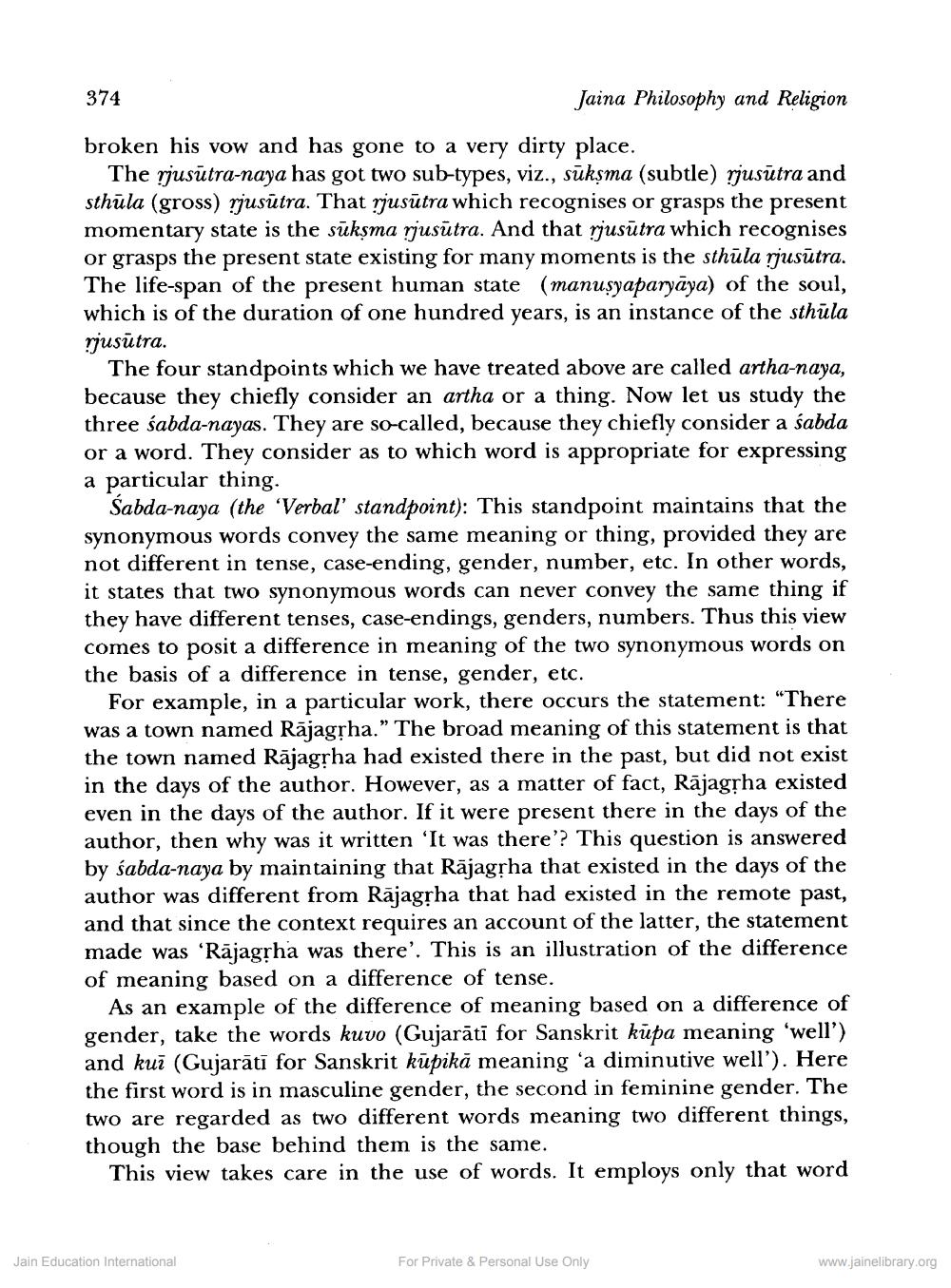________________
374
Jaina Philosophy and Religion
broken his vow and has gone to a very dirty place.
The rjusūtra-naya has got two sub-types, viz., sūkşma (subtle) rjusūtra and sthūla (gross) rjusūtra. That rjusūtra which recognises or grasps the present momentary state is the sūkşma rjusutra. And that rjusūtra which recognises or grasps the present state existing for many moments is the sthūla rjusūtra. The life-span of the present human state (manusyaparyāya) of the soul, which is of the duration of one hundred years, is an instance of the sthula rjusūtra.
The four standpoints which we have treated above are called artha-naya, because they chiefly consider an artha or a thing. Now let us study the three śabda-nayas. They are so-called, because they chiefly consider a sabda or a word. They consider as to which word is appropriate for expressing a particular thing.
Sabda-naya (the 'Verbal standpoint): This standpoint maintains that the synonymous words convey the same meaning or thing, provided they are not different in tense, case-ending, gender, number, etc. In other words, it states that two synonymous words can never convey the same thing if they have different tenses, case-endings, genders, numbers. Thus this view comes to posit a difference in meaning of the two synonymous words on the basis of a difference in tense, gender, etc.
For example, in a particular work, there occurs the statement: "There was a town named Rājagrha." The broad meaning of this statement is that the town named Rājagļha had existed there in the past, but did not exist in the days of the author. However, as a matter of fact, Rājagļha existed even in the days of the author. If it were present there in the days of the author, then why was it written 'It was there'? This question is answered by śabda-naya by maintaining that Rājagrha that existed in the days of the author was different from Rājagrha that had existed in the remote past, and that since the context requires an account of the latter, the statement made was 'Rājagrha was there'. This is an illustration of the difference of meaning based on a difference of tense.
As an example of the difference of meaning based on a difference of gender, take the words kuvo (Gujarātī for Sanskrit kūpa meaning 'well') and kui (Gujarati for Sanskrit kūpikā meaning 'a diminutive well'). Here the first word is in masculine gender, the second in feminine gender. The two are regarded as two different words meaning two different things, though the base behind them is the same.
This view takes care in the use of words. It employs only that word
Jain Education International
For Private & Personal Use Only
www.jainelibrary.org




